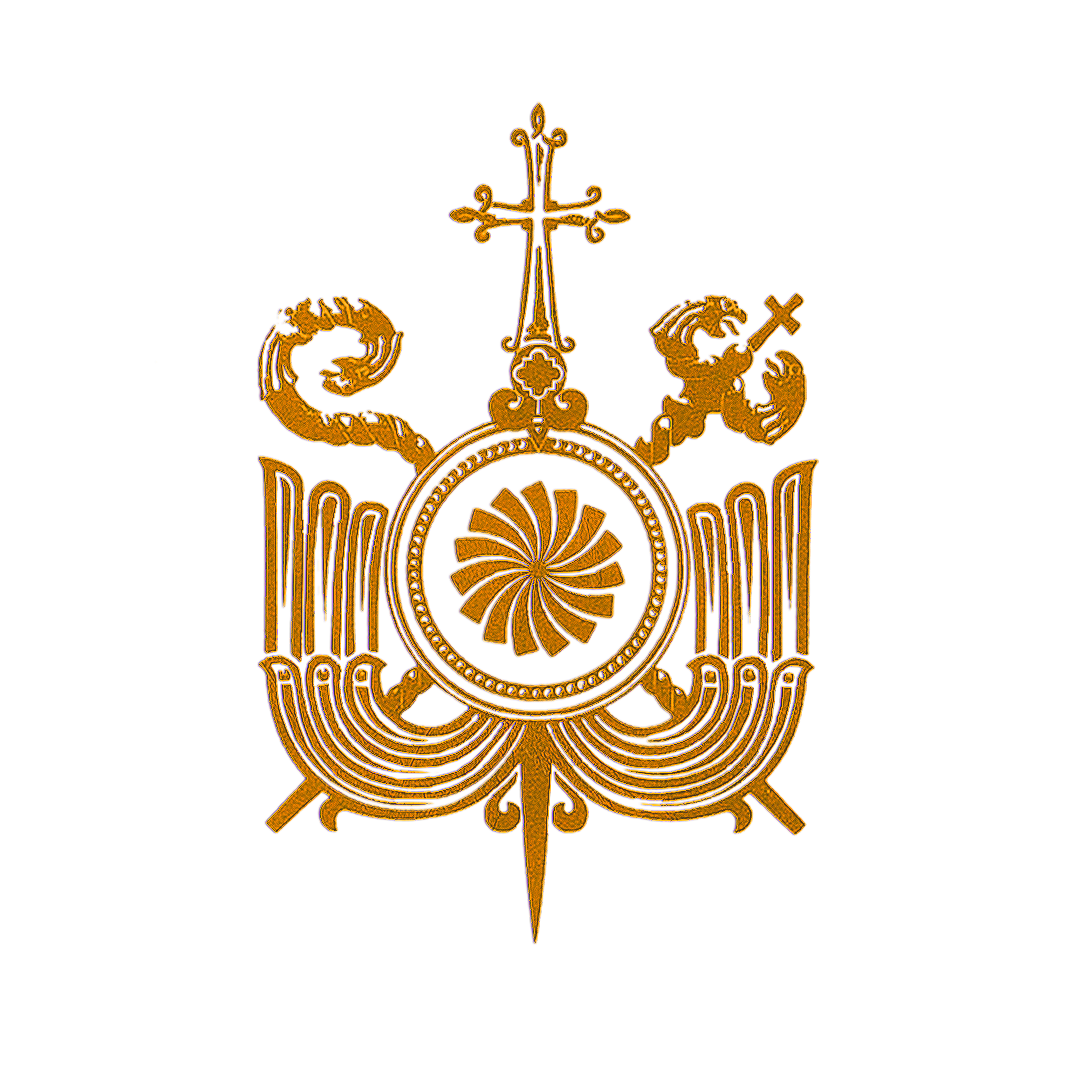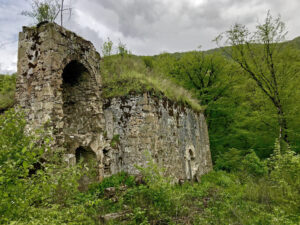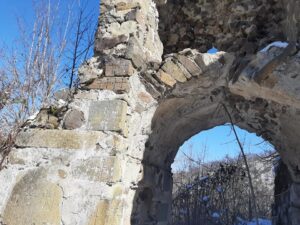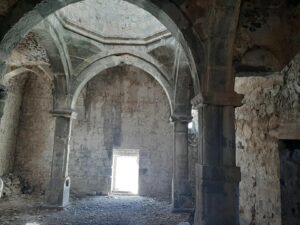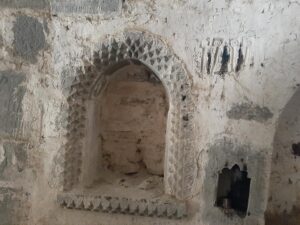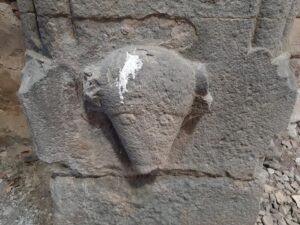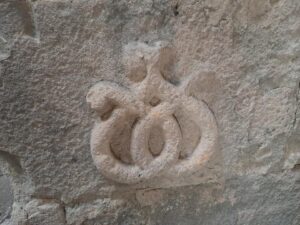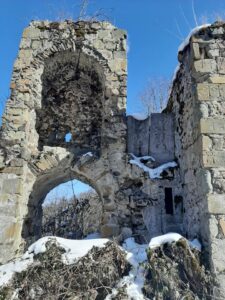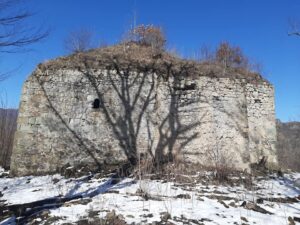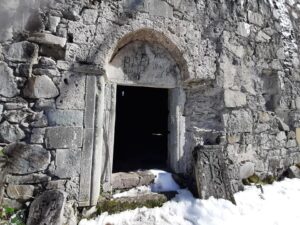The Khatravank monastery
Martakert Province, Vaghuhas village
The Khatravank monastery complex is located about 8 km west of the village of Vagukhas in the Martakert region, on an inaccessible plateau surrounded by valleys, at the foot of which the Tatar River flows. The monastery is surrounded by dense forest. The name of the monastery is mentioned in inscriptions and in ancient sources as (Khadari or Khadai monastery), but it was also written as "Khatra Monastery", "Khtra Monastery", which is a popular pronunciation. This name probably comes from the name of Khada or Khat, a disciple Apostle Thaddeus, to whom the monastery is dedicated. There is information that Khatravank was a diocese. Hadavank has existed since the early Middle Ages, it had a Catholic church, minor churches, ancillary buildings. It was destroyed by an earthquake in the first half of the 12th century, after which the Seljuk Turks raided the center in 1143. The reconstruction of the monastery began at the end of the 12th century and at the beginning of the 13th century is associated with the name of Hovhannes Vardapet Khachenets, who restored Khadavank in 1204, completing the construction of its main temple, as evidenced by the building inscription written to the left of the main entrance on the western wall of the temple.
The church with a central dome on four columns is a large hall with a sacristy in the east. Hovhannes mentions in the inscription that he collected books and khachkars in the monastery.
The monastery underwent major repairs and additions by the son of Hassan II Gregory II and his wife Aspa in the late 13th - early 14th centuries.
The Hovhannesashen temple has a cross on the inside, rectangular on the outside, with apses in its four corners. The plan is disproportionate. Internal columns are made of polished gray stone, decorated with sculptures. Two of the four columns are complete and the other two are made of two pieces of stone. Animal heads are carved on the pillars of the pillars facing the western entrance, one sculpture on each pillar. The first two are the heads of oxen, the last two are the heads of rams and lions. Now the protrusions are damaged, they are difficult to distinguish from each other. Animal heads, carved into the columns of four columns inside the main temple of Hadavank, lead us to medieval architectural structures, as well as to the ideological origins of the four zodiacs, widely used in other fields of art, revealing their closeness to the ancient.
The stage with the high tabernacle is located in the semicircle of the east wall. There are also two large and two small bushes. Internal walls are plastered with lime mortar.
A collapsed bell tower next to the church. The dilapidated walls show that the bell tower was two-story.
There is a refectory in the northern part of the bell tower. This is a vaulted hall. The walls are built of local rough stone, only vaulted arches and pillars are lined with polished stones.
Consists of two rooms. The large hall has a fireplace (hearth), cupboards (niches) in the walls and one window. There is only one window in the other room.
Hadavank's architectural solutions are very interesting and unique.
To the west of Khatravank, in the rock, is Khatra, a fortress popularly called Chicha.
Bibliography
«Diocese of Artsakh» (2009), Erevan, 411 pp.
